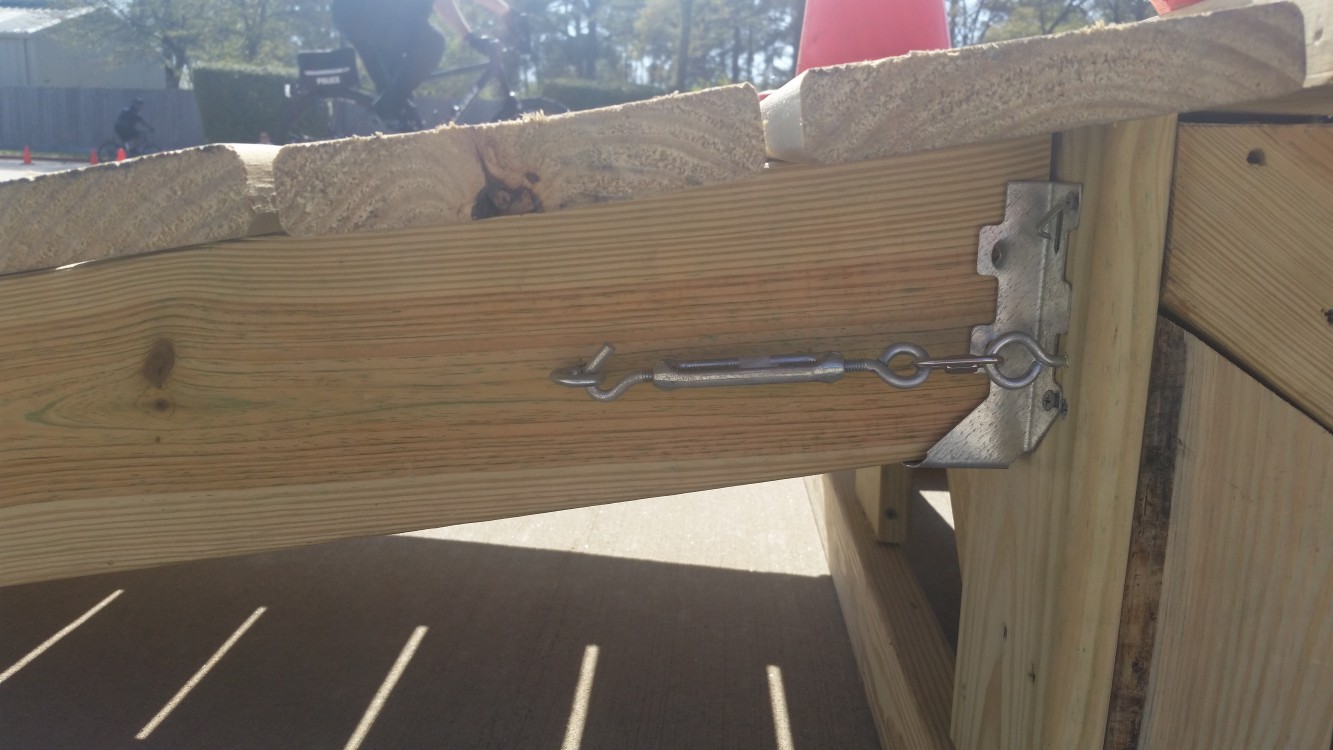Stair Training Made Easier
by Brian Gillman, EMSCI #189T-B
Cypress Creek (TX) EMS
IPMBA Conference Coordinator
Over the years our agency has consistently struggled with locating stairs that are accessible and appropriate for teaching stair ascents. We live and work in a suburban area with relatively flat terrain and limited outdoor stairs in close proximity to our training area. To comply with the Americans with Disabilities Act, most businesses opt for ramps and add shorter, steeper stairs which do not meet our training standards. In 2015, we were given the opportunity to host a large regional IPMBA Instructor Course. During the planning stage, we decided that we wanted to provide a solid stair training site at our training facility to supplement our course.
According the IPMBA training standards, we need to provide 2-3 steps with a 10-12 foot run-out space for safe training. The stairs should not be more than a 45-degree angle, with a rise of between 6-7 inches and a run of 11-12 inches per step. We decided to build two different sets of stairs offering two levels of training challenge: one set at the minimum standard and the second at the maximum standard. The storage and movement of the equipment was considered in our design.
All the materials for the training aid were obtained at a local hardware store. The stairs were constructed of prefabricated step frames for mobile home porches. The step platforms are 48-inch wide prefabricated steps with pre-cut grooves in the steps for traction. The 48-inch width was selected to give adequate room for bike corrections, but still allow safe spotting of the riders. The minimum standards required the prefabricated step frames to be cut down at each level to obtain the correct rise vs. run on the steps.
The base of the stairs were framed in 2x6 boards for weight and stability and the upper steps were supported by 4x4 posts for stability. All the components were assembled using decking screws so parts could be replaced as needed.
The run-out ramps are constructed of 5/4 decking boards with rounded corners attached to 2x6 rails. They are 48 inches wide by 8 feet long for safe descents and ample room for spotters. The ramps are attached to the stairs by placing the 2x6 rails into joist hangers attached to the back of the stairs and then joining the two components by adjustable come-along screws. This system allows them to be disassembled for moving and storage, and reassembled into a safe, stable training aid. The units can be stored and moved via a standard bed pick-up truck or can be loaded onto a pallet with casters.
All the lumber materials were pressure-treated for outdoor use, although we are fortunate to have indoor storage. The estimated out-of-pocket expense for the materials was in the $300-$400 range for both sets of stairs and ramps. Labor was not accounted for in the costs. Anyone with basic woodworking abilities and tools can easily build these units over a weekend.
We found the stairs to be adequate training aids for initial stair ascent introduction and refresher training at our training site. We still utilize several sets of actual steps for stair descents but are considering building platforms to stack our stair sets for descent training on location as well.
Good luck in your training. Anyone who has created other training aids and would like to share may email an article and photos to info@ipmba.org.
Brian has 20 years’ experience as a field paramedic and Fire/EMS dispatcher with Cypress Creek EMS in Spring, Texas. He is the logistics coordinator for the CCEMS Bike Team and has been active on the team since 2005. He has been an IPMBA Instructor since 2007, a maintenance officer since 2008, and teaches 2-3 IPMBA Courses annually. He was elected to the IPMBA Board in 2014 and has held the positions of Membership and EMS Coordinator. He currently serves as Conference Coordinator. He can be reached at bgillman@pharmacal.com.
Photos courtesy Brian Gillman.
(C) 2016 IPMBA. This article appeared in the Fall 2016 issue of IPMBA News.

